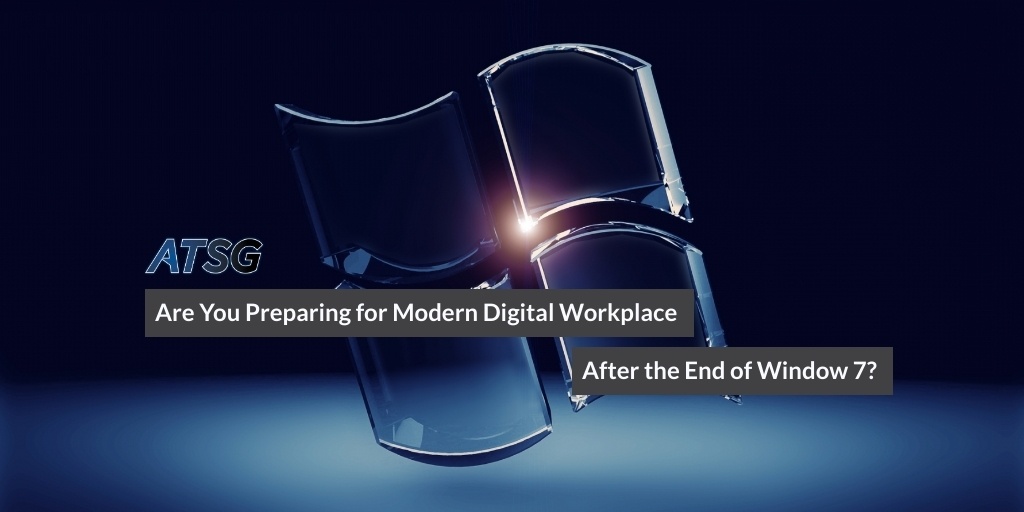
Imagine you’re the CIO of a hospital group, managing at least 8,000 devices that currently run the Windows 7 operating system. Right now, you’re staring down the barrel of the end of life for Windows 7. Where do you go from here?
Today, most work done in a corporate environment gets accomplished using the Microsoft platform, so you are far from alone. The software company plans a lifecycle for all its products; the Windows 7 lifecycle began when it was released to the public on July 22, 2009 and enterprises have been working away on it for a good 10 years. Now, its “end of life” means Microsoft will no longer provide security updates and discontinue all support for the Windows 7 operating system after January 14, 2020.
Of course, you can continue to use Windows 7 as an operating system even after the end of life date (your devices will not blow up like the message devices in Mission Impossible), but you do so at your own risk. Without security updates, your corporate data will become vulnerable – a huge risk, indeed. Until the end of life date, Microsoft does offer “extended support,” which includes paid support and basic security updates, phasing out complimentary license support and updates to design and features. However, Microsoft can stop support for any machine at any time and is already blocking older machines as of June 2018. You need a plan now – and you have less than eight months to implement it.
In the past, for instance, you would probably perform a “major upgrade” transition to the Windows 10 operating system and continue business as usual. Here’s the thing – Windows 10 will be the last version of the operating system that Microsoft releases. Rather than developing a new operating system as an upgrade, Microsoft has moved to a cloud-based model, releasing refreshes to Windows 10 twice a year. All of a sudden, “major” upgrades with “new” software will be a thing of the past for any enterprise using the Microsoft platform.
So, the Bigger Question is, What Does End of Life for Windows 7 Really Mean for Your Workplace?
To paraphrase the Chinese storyteller Feng Menglong, “May you live in interesting times.” We can categorize today’s work environment as interesting times, with its confluence of evolving circumstances that seem pretty standard yet are bridging a gap between personal and professional life:
- The first is the rise of the cloud. Both at home and at work, people are consuming applications and cloud services in a way that they’ve never done before.
- Another is the new mobility. The powerful capability of mobile devices like smartphones is absolutely incredible, allowing people to search and buy and talk and plan and do more things than they’ve ever been able to do, sitting in front of a desktop screen or sitting in front of the ocean.
- What’s more, personal experiences are influencing the nature of work experience. Employees want the kind of user experiences they enjoy in their personal lives to transform their working experience. They want it all, and IT organizations are challenged to provide all of it to them on their own.
- Adding to this is the number of enterprises trying to leverage devices that still run Windows 7. With its end of life so near, IT organizations are scrambling to address all of these circumstances at once – upgrading operating systems to Windows 10 and delivering great experiences to their end users who want to combine personal mobility and user experience with their professional work experience.
For enterprises facing this confluence of evolving circumstances, this means a big change.
How Does ATSG’s Digital Workplace as a Service Help Enterprises Through This Transition?
Digital Workplace as a Service, the all-inclusive subscription-based endpoint technology solution fully managed by ATSG, is a highly cost effective, state-of-the-art bundle of devices and software, along with a rolling refresh, deployment and secure endpoint management service that puts the latest digital productivity package in the hands of your users for an affordable, cost effective monthly service fee. Enterprises can ease the burden of an accelerated pace of change by embracing the cloud and implementing this new technology as a service model rather than relying on a big refresh project that can take two to five years.
Whether your enterprise needs to transition from Windows 7 to Windows 10 or has already adopted Windows 10 and wants to reduce cost and deliver better experiences to your end users, a Digital Workplace as a Service subscription will not only better secure your enterprise and reduce total cost of ownership, but will also enable superior work productivity and user experience with full lifecycle management – dramatically accelerating the digital transformation of your workplace.
This is what the end of life for Windows 7 could really mean for your workplace.
ATSG – Transforming the customer experience through tech-enabled managed services
Today’s choices for mobility, cloud, infrastructure, communications, applications and operations are mission-critical for small, mid-sized and large enterprises. ATSG, Inc. is leading the transformation into Technology Solutions as a Service with our tech-enabled managed services portfolio and a commitment to technology innovation, operational excellence and client intimacy. Recognized by industry leaders and industry-leading publications, ATSG has 25 years of operating history delivering exceptional client experiences that directly result in competitive advantage, cost-savings, growth and improved operational efficiencies. Visit ATSG.net, and call 1.914.517.2919 or visit one of our five Tri-State locations today for more information.




